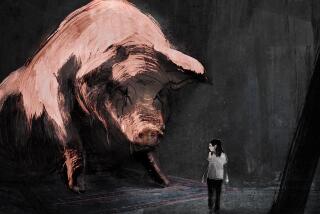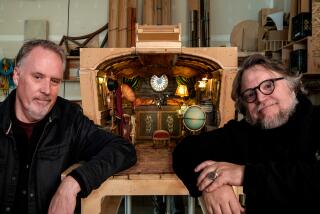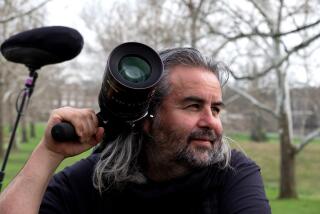MOVIE REVIEWS : A Tribute to Animator Oskar Fischinger
“An Evening of Films by Oskar Fischinger,” screening at 8 tonight at Filmforum, offers viewers a rare opportunity to see the work of one of the pioneers of abstract film making.
Born in Gelnhausen, Germany, Fischinger (1900-1967) was a member of the group of European non-objective animators that included Viking Eggeling, Walter Ruttman and Hans Richter. These artists sought to integrate film making--especially animation--with the traditional visual arts, and Fischinger’s work has stronger ties to easel painting than it does to Warner Bros. cartoons. Almost any frame from these films could be blown up and displayed as a non-objective painting, reminiscent of the work of Kandinsky or Klee.
His best films--”Composition in Blue” (1935), “Allegretto” (1936), “An Optical Poem” (1943) and “Motion Painting 1” (1947)--blend form, composition, color and motion into an abstract ballet. But for all their graphic sophistication, it is the deft use of movement in these films that enchants the audience. Fischinger somehow infused every medium he tried (drawings, three-dimensional objects, cut-outs and oil paint on glass) with a feeling of life: Lines, geometric shapes and even cigarettes move as naturally and spontaneously as folk dancers.
In Europe, Fischinger was widely respected as an artist. His personal films won awards, Fritz Lang asked him to create special effects for “Woman in the Moon” and big companies came to him for advertising films. But abstract art, including abstract film, was anathema to the Nazi regime, and Fischinger left Germany for America in 1935.
The transition proved difficult. His vision of film as the product of one individual’s aesthetic vision had little in common with the work of the Hollywood studios. Although he worked at MGM, Paramount and Disney, Fischinger was unhappy at all three studios and left each after a few months. He continued to make personal films, often working under grants from the Guggenheim Foundation.
Ironically, he’s best known in the United States for his work on the “Tocatta and Fugue” sequence in Disney’s “Fantasia” (which screens in the program). The collaboration between Fischinger and Disney was not a happy one. Neither man appreciated the other’s talents, and the resulting film is a muddled compromise that lacks both the abstract purity of Fischinger’s films and the polished appeal of Disney’s character animation.
Oskar Fischinger’s films have had a profound influence on animators and experimental film makers for decades: Kenneth Anger, Jordan Belson, George Griffith, Sara Petty and Larry Cuba are among the artists who acknowledge his importance to their own work. Anyone interested in the potential as a medium of creative expression should see the Fischinger retrospective at Filmforum, hosted by his widow, Elfriede.
At the Wallenboyd Theater, 301 Boyd Street, Los Angeles. Information: (213) 276-7452.
More to Read
Only good movies
Get the Indie Focus newsletter, Mark Olsen's weekly guide to the world of cinema.
You may occasionally receive promotional content from the Los Angeles Times.










